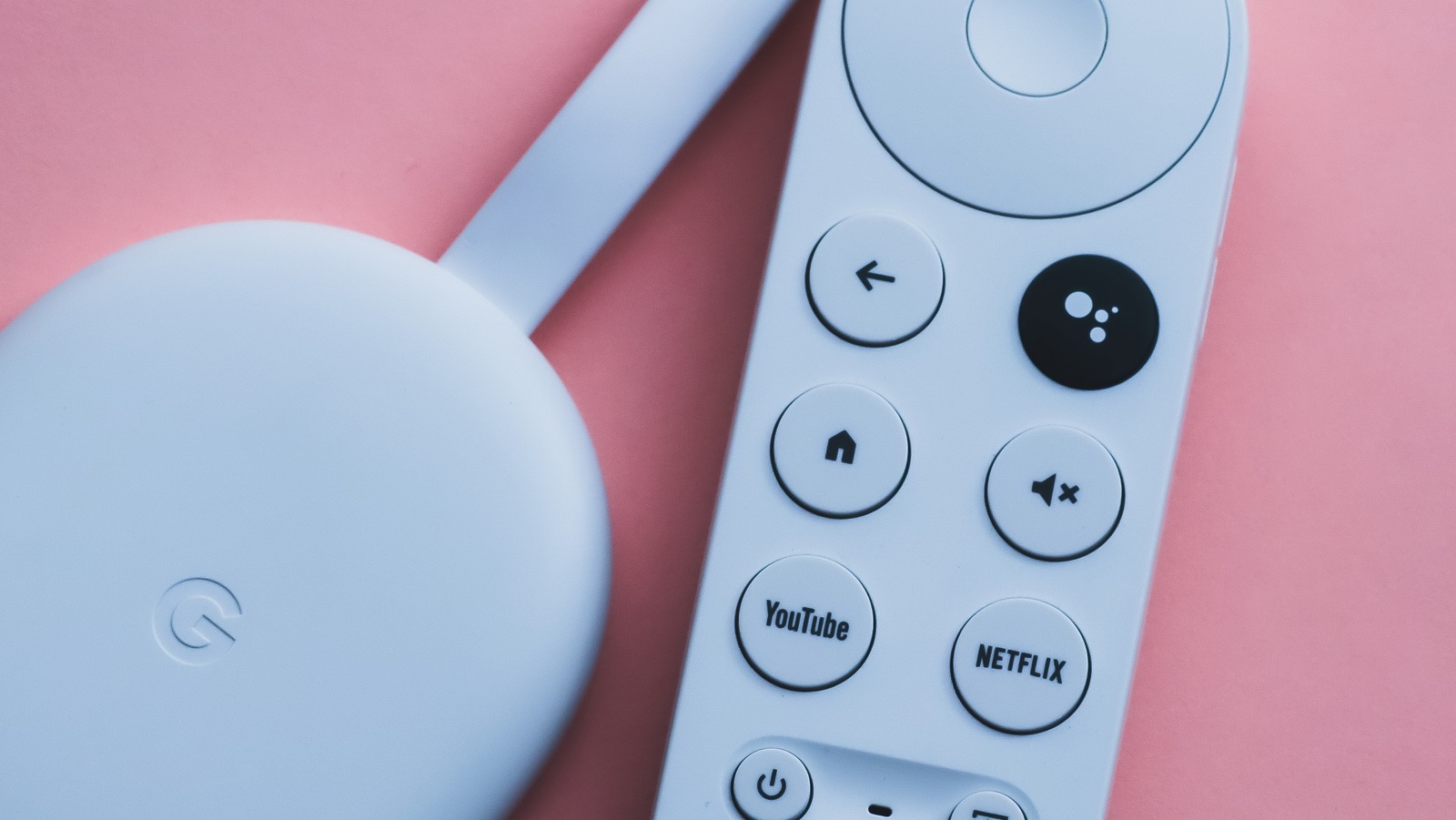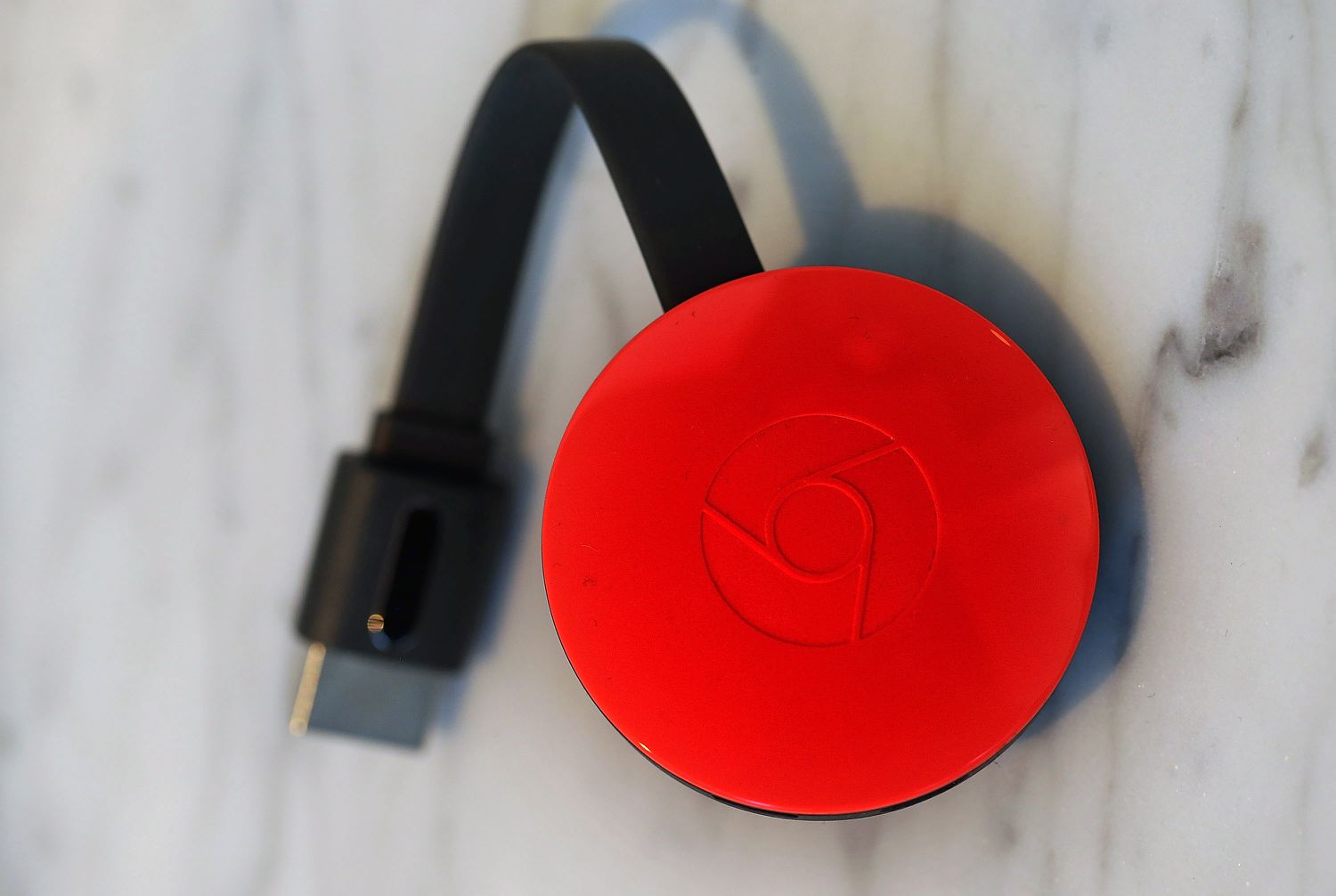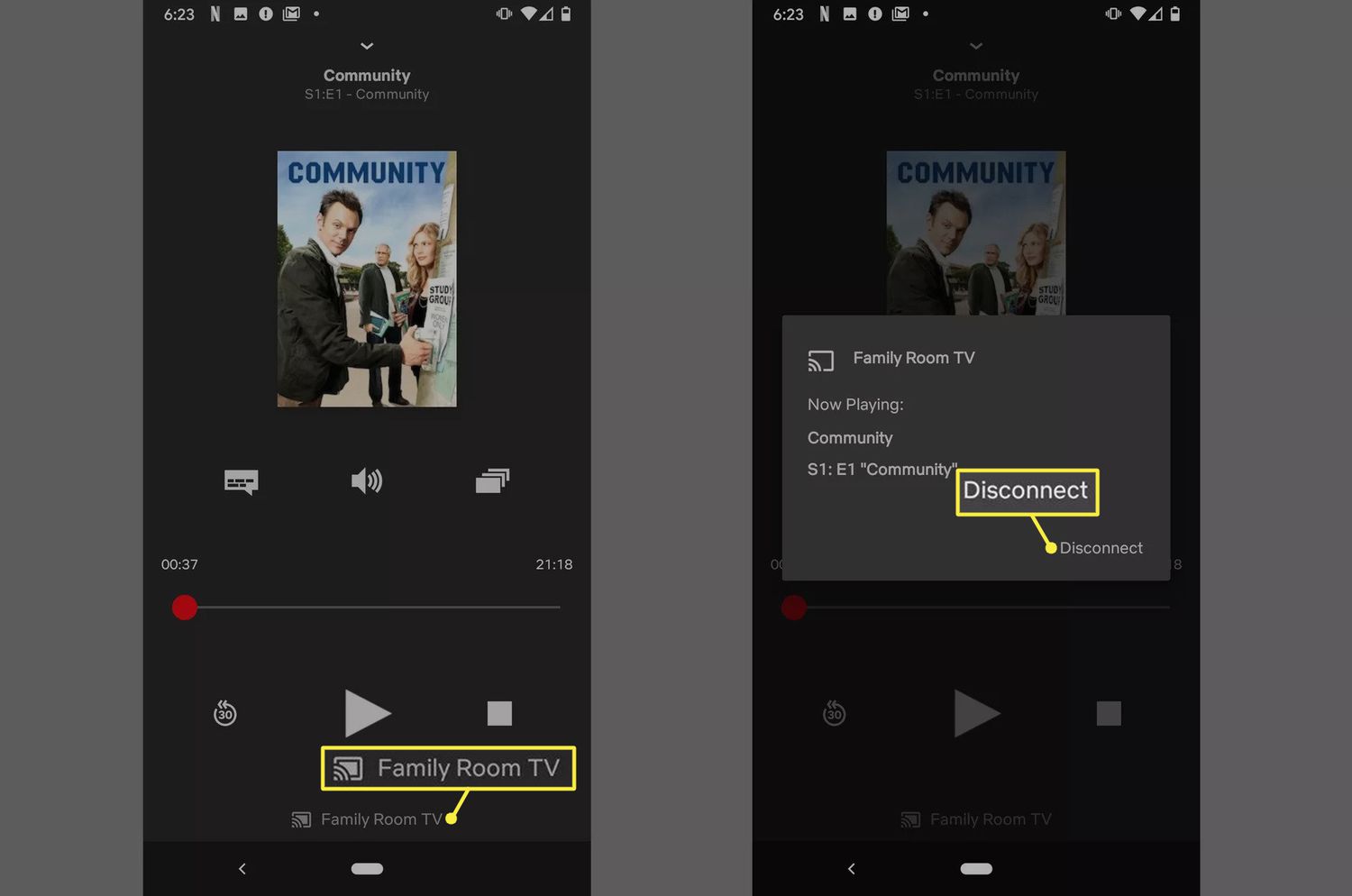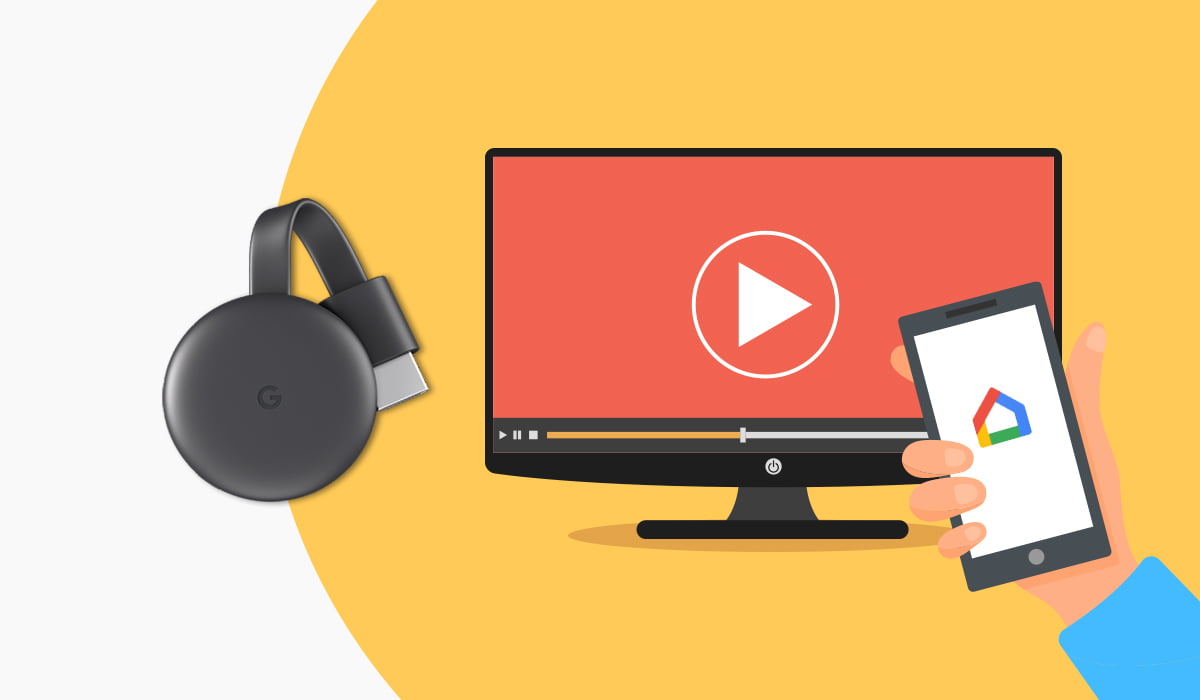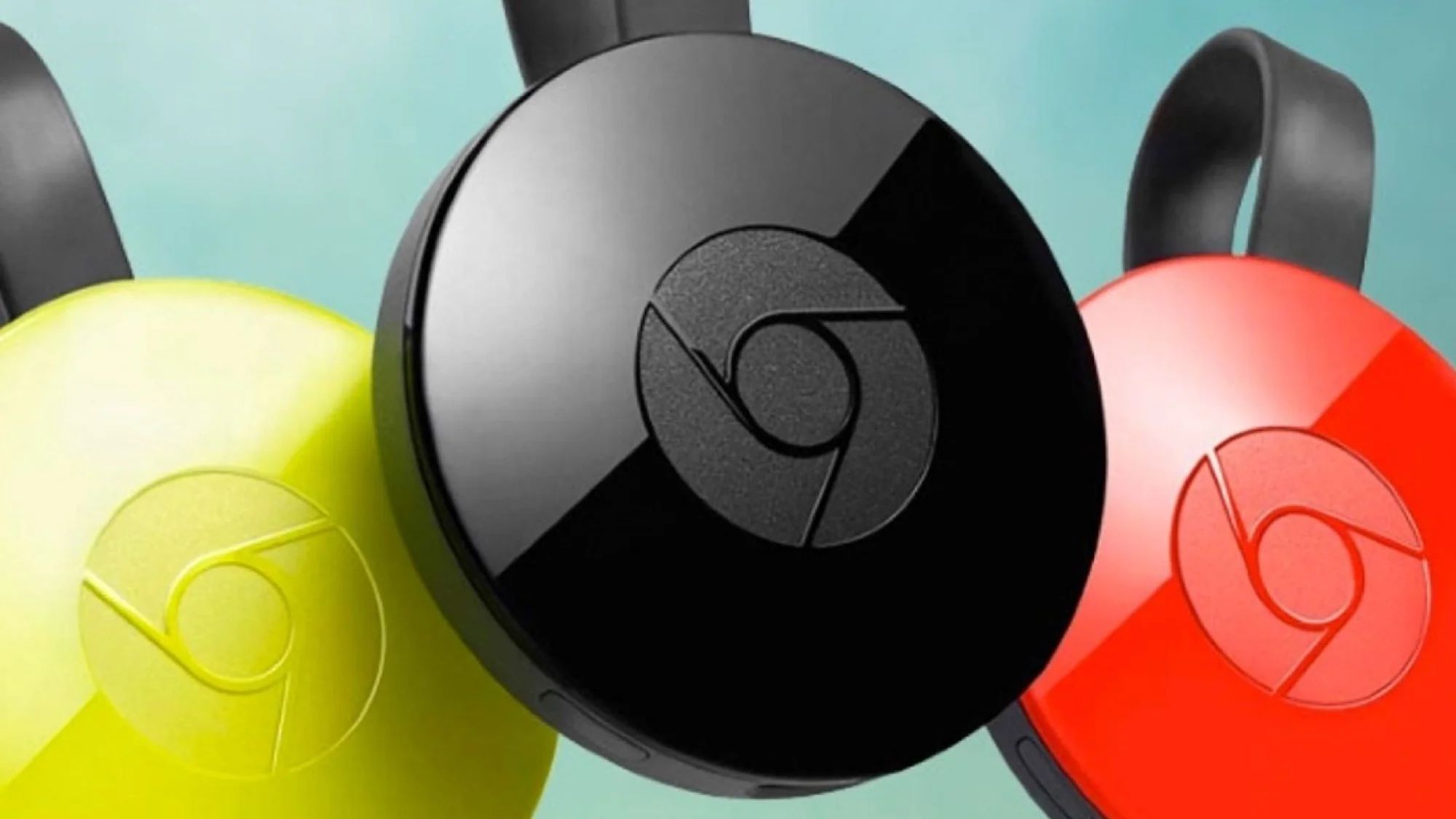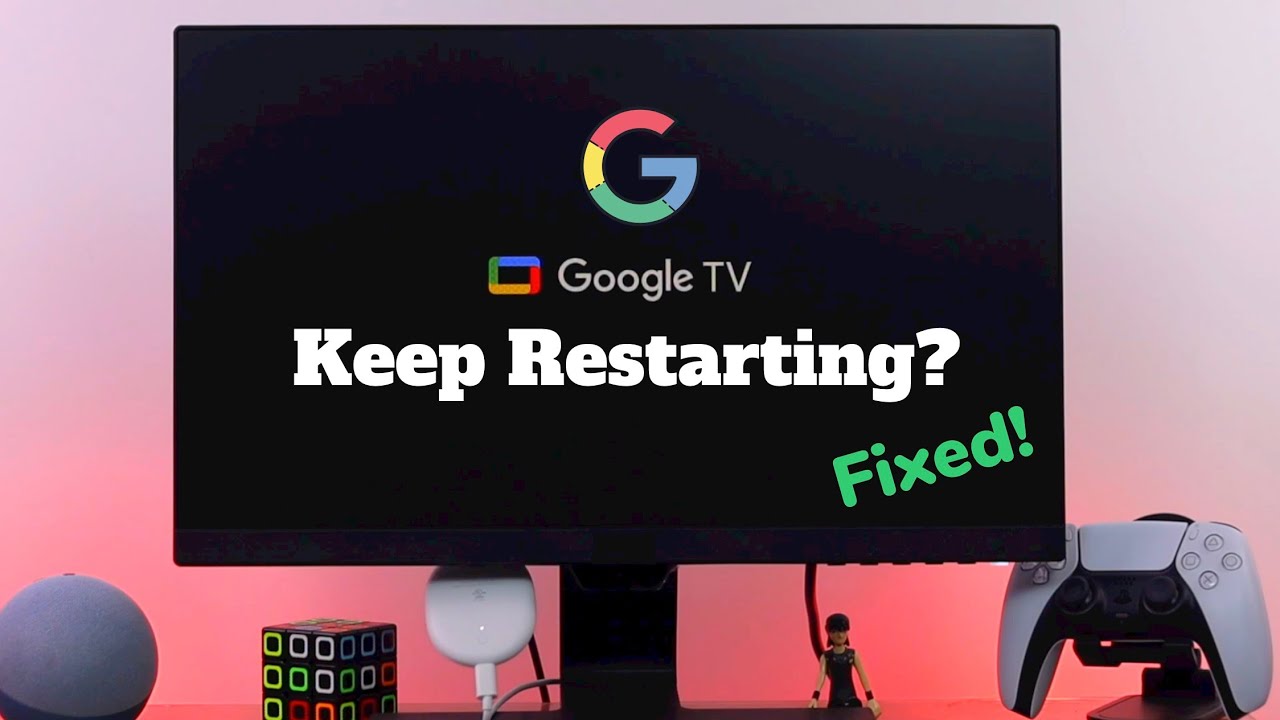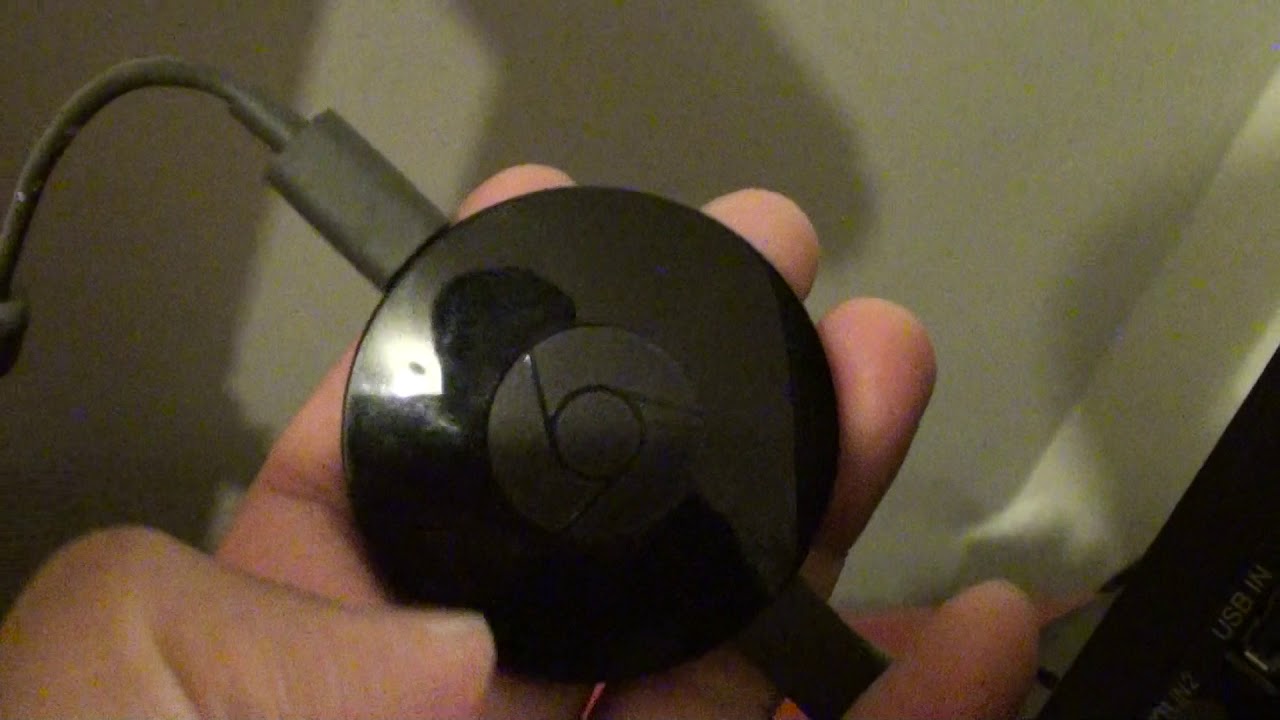Introduction
Welcome to the digital age, where streaming content on your television has become more accessible than ever, thanks to devices like Chromecast. Chromecast, developed by Google, allows you to cast videos, music, and even your favorite apps from your smartphone, tablet, or computer to your TV. It provides a seamless experience, allowing you to enjoy your favorite entertainment on a bigger screen.
However, there may be times when you encounter an annoying issue – your Chromecast keeps disconnecting. This can be frustrating, especially when you’re in the middle of binge-watching your favorite show or sharing a video with friends and family. But fear not, as we’ve got you covered. In this article, we will explore the common causes behind Chromecast disconnections and provide troubleshooting steps to help resolve this issue.
There are several factors that can contribute to your Chromecast repeatedly disconnecting. It could be related to your Wi-Fi network, the firmware of your Chromecast device, or even the placement of the device in your home. By understanding these potential causes and implementing the necessary measures, you can ensure a stable and uninterrupted streaming experience.
Before delving into the troubleshooting steps, it’s important to note that these solutions apply to the most commonly reported issues with Chromecast. If you have already tried some of these steps without success, or if you are facing a different problem altogether, it may be best to reach out to Chromecast support for further assistance.
So, without further ado, let’s dive into the common causes of Chromecast disconnections and how to troubleshoot them.
Common Causes of Chromecast Disconnecting
There are several common causes that can lead to your Chromecast repeatedly disconnecting. Understanding these causes can help you pinpoint the issue and find an appropriate solution. Let’s take a look at some of the most prevalent reasons:
1. Weak Wi-Fi Signal: A weak Wi-Fi signal can result in intermittent disconnections. Factors such as long distance from the router, obstacles like walls or furniture, or interference from other devices can weaken the signal strength. This can lead to disruptions in the Chromecast connection.
2. Outdated Chromecast Firmware: Just like any other electronic device, Chromecast requires regular firmware updates to ensure optimal performance. Outdated firmware can cause compatibility issues and may result in frequent disconnections.
3. Network Overload: If there are too many devices connected to your Wi-Fi network simultaneously, it can cause congestion and increased network traffic. This can negatively affect the performance of your Chromecast and lead to frequent disconnects.
4. Inadequate Power Supply: Insufficient power supply to your Chromecast can cause it to malfunction, leading to frequent disconnections. This can happen if your USB port or power adapter is not providing enough power to the device.
5. Interference from Other Devices: Other electronic devices, such as cordless phones, baby monitors, or microwave ovens, can interfere with the Wi-Fi signal. This interference can disrupt the connection between your casting device and the Chromecast.
6. Wi-Fi Network Configuration: Incorrect or suboptimal Wi-Fi network settings, such as conflicting IP addresses, wrong DNS configurations, or restrictive firewall settings, can lead to connection issues with your Chromecast.
7. Overheating: Extended periods of usage can cause the Chromecast device to overheat, resulting in disconnections. This typically happens when the device does not have proper ventilation or is placed in an enclosed space.
By understanding these common causes, you can begin troubleshooting the issues and finding solutions. In the next section, we will discuss the steps you can take to resolve the problem of Chromecast disconnections and enjoy uninterrupted streaming.
Troubleshooting Steps for Chromecast Disconnecting
If you’re experiencing frequent disconnections with your Chromecast, there are several troubleshooting steps you can take to resolve the issue. These steps will help you identify and address the potential causes mentioned earlier. Let’s dive in:
1. Check Your Wi-Fi Connection: Start by ensuring that your Wi-Fi connection is stable and strong. Move closer to the Wi-Fi router to eliminate any distance-related issues. Consider using a Wi-Fi range extender or mesh system if you are experiencing connectivity issues in specific areas of your home.
2. Update the Chromecast Firmware: Keeping your Chromecast firmware up to date is crucial for optimal performance. Open the Google Home app on your casting device, navigate to the Devices tab, select your Chromecast, and check for any available firmware updates. If an update is available, follow the on-screen prompts to install it.
3. Restart Your Chromecast Device: Sometimes, a simple restart can resolve connectivity problems. Unplug your Chromecast device from the power source, wait for a few seconds, and then plug it back in. This will refresh the device and establish a new connection with your casting device.
4. Power Cycle Your Router and Modem: Power cycling your router and modem can help resolve network-related issues. Disconnect the power supply from both devices, wait for 10-15 seconds, and then reconnect the power. Allow the devices to restart fully before attempting to reconnect your Chromecast.
5. Ensure Proper Placement of the Chromecast: Make sure that your Chromecast is placed in an open area with good ventilation. Avoid placing it behind other objects or inside an enclosed space, as this can lead to overheating and disconnections. Additionally, ensure that it is not too far away from the Wi-Fi router.
6. Check for Interference from Other Devices: Move any electronic devices, such as cordless phones or microwave ovens, away from your Chromecast and Wi-Fi router. These devices can cause interference and disrupt the Wi-Fi signal. Also, try changing the Wi-Fi channel on your router to avoid conflicts with neighboring networks.
7. Update the Apps on Your Casting Device: Ensure that the apps you are using to cast content are up to date. Outdated apps may have compatibility issues with your Chromecast, leading to disconnections. Visit the respective app stores on your casting device to check for updates.
8. Reset Your Chromecast to Factory Settings: If all else fails, you can try resetting your Chromecast to its factory settings. To do this, open the Google Home app, navigate to the Devices tab, select your Chromecast, go to Settings, and choose Factory Reset. Keep in mind that this will erase all personalized settings and you will need to set up your Chromecast again.
By following these troubleshooting steps, you can resolve the issue of Chromecast disconnecting and enjoy uninterrupted streaming once again. If the problem persists after trying these solutions, it’s recommended to reach out to Chromecast support for further assistance.
Check Your Wi-Fi Connection
A stable and strong Wi-Fi connection is essential for a smooth streaming experience with your Chromecast. If your Chromecast keeps disconnecting, one of the first things you should do is check the status of your Wi-Fi connection. Here are some steps to follow:
1. Move closer to the Wi-Fi router: Sometimes, the disconnections occur due to a weak signal strength. If you are far away from the router, try moving closer to it to establish a stronger connection.
2. Remove any physical obstacles: Walls, furniture, and other physical objects can obstruct the Wi-Fi signal, leading to connectivity issues. Ensure there are no large obstacles between your Chromecast and the Wi-Fi router.
3. Check signal strength: Most routers have indicators or settings that display the signal strength. Use this feature to determine the strength of the Wi-Fi signal in the area where your Chromecast is located. If the signal strength is low, consider using a Wi-Fi range extender or mesh system to boost the signal.
4. Adjust the Wi-Fi channel: Wi-Fi routers operate on different channels. Sometimes, neighboring Wi-Fi networks can interfere with yours, causing disconnections. Access your router’s settings and try switching to a less congested Wi-Fi channel.
5. Restart your Wi-Fi router: A simple restart of your Wi-Fi router can sometimes resolve connectivity issues. Unplug the router from the power source, wait for a few seconds, and then plug it back in. Allow the router to restart fully before attempting to reconnect your Chromecast.
6. Use a Wi-Fi analyzer: If you suspect that interference from other devices is causing the disconnections, consider using a Wi-Fi analyzer app on your smartphone. This app will help you identify any nearby devices or networks that may be interfering with your Wi-Fi signal. Adjust the placement of your Chromecast or move conflicting devices away to minimize interference.
7. Perform a speed test: Check your internet connection speed to ensure it meets the recommended requirements for streaming content. Various online services and mobile apps allow you to perform a speed test. If your internet connection is too slow, contact your service provider to upgrade your plan.
8. Consider a wired connection: If you have consistent issues with your Wi-Fi connection, you may consider using an Ethernet cable to connect your Chromecast directly to the router. This can provide a more stable and reliable connection, especially if you’re located far away from the router.
By checking the status of your Wi-Fi connection and implementing these steps, you can improve the stability and strength of your connection, reducing the chances of your Chromecast disconnecting unexpectedly.
Update the Chromecast Firmware
Keeping your Chromecast firmware up to date is crucial for ensuring optimal performance and stability. Outdated firmware can sometimes lead to compatibility issues and frequent disconnections. Here’s how you can update the firmware on your Chromecast:
1. Open the Google Home app: Launch the Google Home app on your casting device (smartphone, tablet, or computer) that is connected to the same Wi-Fi network as your Chromecast.
2. Navigate to the Devices tab: Tap on the Devices tab in the bottom right corner of the app to view the list of devices connected to your Google Home.
3. Select your Chromecast: Look for your Chromecast device in the list of available devices and tap on it to access its settings.
4. Check for firmware updates: Within the Chromecast settings, you should see an option to check for updates. Tap on this option to initiate a search for any available firmware updates for your Chromecast.
5. Install the firmware update: If a firmware update is available, you will be prompted to install it. Follow the on-screen instructions to proceed with the update. Ensure that your casting device remains connected to the Wi-Fi network throughout the update process.
6. Wait for the update to complete: The firmware update may take a few minutes to download and install. Avoid interrupting the process or disconnecting your Chromecast during this time. Once the update is complete, your Chromecast will automatically restart.
7. Verify the firmware update: After the restart, go back to the Chromecast settings in the Google Home app and check if the firmware version has been updated. This confirms that the update was successful.
By regularly updating the firmware on your Chromecast, you ensure that the device is equipped with the latest bug fixes, enhancements, and compatibility updates. This can significantly reduce the occurrence of disconnections and improve the overall performance of your Chromecast.
Restart Your Chromecast Device
If you’re experiencing frequent disconnections with your Chromecast, one simple yet effective troubleshooting step is to restart the device. Restarting your Chromecast can help refresh its settings and establish a new connection, potentially resolving any underlying issues. Here’s how you can restart your Chromecast:
1. Unplug the power source: Locate the power cable connected to your Chromecast device and unplug it from the power source. This could be a power outlet or a USB port on your TV.
2. Wait for a few seconds: Give your Chromecast a brief moment to completely power down. Waiting for around 10-15 seconds should be sufficient.
3. Plug the power source back in: Reconnect the power cable to the Chromecast device, ensuring it is securely plugged in.
4. Wait for the Chromecast to restart: After plugging in the power source, allow your Chromecast a few moments to fully restart. You may see the Chromecast logo appear on your TV screen or notice the light on the device flashing.
5. Reconnect your casting device: Once the Chromecast has restarted, use the Google Home app or the casting app on your smartphone, tablet, or computer to reconnect your casting device to the Chromecast. Follow the standard casting process to establish a new connection.
Restarting your Chromecast can help resolve various issues that may be causing frequent disconnections. It clears out any temporary glitches or software hiccups that might be interfering with the device’s functionality. However, it’s important to note that restarting your Chromecast will not erase any saved settings or data.
If you’re still experiencing disconnections after restarting your Chromecast, you can move on to other troubleshooting steps to further investigate the issue. Restarting is a quick and easy step that often brings positive results, so it’s always worth trying before moving on to more complex solutions.
Power Cycle Your Router and Modem
If you’re facing frequent disconnections with your Chromecast, it’s possible that the issue lies with your router or modem. Power cycling, or rebooting, these devices can often resolve connectivity issues by refreshing their settings and establishing a new connection. Here’s how you can power cycle your router and modem:
1. Locate the power source: Identify the power cables connected to your router and modem. These cables typically plug into a power outlet or a power strip.
2. Unplug the power cables: Carefully disconnect the power cables from both the router and modem. It’s important to unplug both devices to ensure a complete power cycle.
3. Wait for a brief period: Allow both the router and modem to remain unplugged for about 10-15 seconds. This gives them enough time to fully power down.
4. Reconnect the power cables: Plug the power cables back into the respective devices. Make sure they are securely connected to the power source.
5. Wait for the devices to restart: Give the router and modem a moment to fully power up and establish a stable connection. This process may take several minutes, so exercise patience.
6. Check the Wi-Fi connection: Once the router and modem have restarted, check the Wi-Fi connection by connecting your casting device to the network. Ensure that the connection is stable and strong.
Power cycling your router and modem helps refresh their settings and clears any temporary glitches or errors that may be contributing to the frequent disconnections. This process allows the devices to start afresh and establish a new connection with your Chromecast.
Keep in mind that power cycling your router and modem will not erase any customized settings or configurations. However, it’s always a good idea to document any specific settings you may have modified so that you can easily reapply them if needed.
If power cycling your router and modem does not resolve the disconnection issue, you can move on to other troubleshooting steps to further troubleshoot the problem.
Ensure Proper Placement of the Chromecast
The placement of your Chromecast can have a significant impact on its performance and connectivity. If you’re experiencing frequent disconnections, it’s important to ensure that your Chromecast is placed correctly. Here are some considerations for proper placement:
1. Open and unobstructed area: Place your Chromecast in an open area that is free from any physical obstructions. Avoid placing it behind large objects, such as furniture or electrical appliances, as this can interfere with the Wi-Fi signal.
2. Away from other electronic devices: Keep your Chromecast away from other electronic devices that may cause interference. Examples include cordless phones, baby monitors, microwave ovens, and Bluetooth devices. These devices can emit signals that can disrupt the Wi-Fi connection to your Chromecast.
3. Ideal distance from the Wi-Fi router: Ensure that your Chromecast is within a reasonable range of your Wi-Fi router. If it’s too far away, the signal strength may weaken, leading to disconnections. If possible, move your Chromecast closer to the router to establish a stronger and more stable connection.
4. Consider using Wi-Fi extenders or mesh systems: If you have a large home or areas with weak Wi-Fi coverage, consider using Wi-Fi extenders or mesh systems to enhance the signal strength throughout your living space. These devices can help eliminate dead zones and improve the connection quality for your Chromecast.
5. Avoid overheating: Make sure that your Chromecast is not overheating during use. It’s important to provide proper ventilation to prevent the device from overheating, as excessive heat can cause performance issues and disconnections. Avoid placing the Chromecast in enclosed spaces or covering it with objects that can trap heat.
6. Test different placements: If you’re still experiencing disconnections, experiment with different placements for your Chromecast. Try moving it to different locations within your home to find the spot with the strongest Wi-Fi signal. This trial and error approach can help identify the optimal placement for your Chromecast.
By ensuring proper placement of your Chromecast, you can minimize the risk of disconnections and ensure a stable and uninterrupted streaming experience. Take the time to assess the surroundings and make adjustments as necessary to improve the connectivity and performance of your Chromecast device.
Check for Interference from Other Devices
Interference from other electronic devices can disrupt the Wi-Fi signal and lead to frequent disconnections with your Chromecast. Identifying and minimizing this interference can help improve the stability and performance of your connection. Here are some steps to check for interference from other devices:
1. Locate potential sources of interference: Take note of any other electronic devices near your Chromecast and Wi-Fi router. Devices such as cordless phones, baby monitors, microwave ovens, Bluetooth speakers, and even neighboring Wi-Fi networks can all cause interference.
2. Move conflicting devices away: If you notice that any nearby devices are causing interference, try physically moving them away from your Chromecast and Wi-Fi router. Increasing the distance between these devices can help minimize the interference and improve connectivity.
3. Change Wi-Fi channels: If you live in a densely populated area with multiple Wi-Fi networks, there might be interference from neighboring networks operating on the same channel. Access your router’s settings and try changing the Wi-Fi channel to a less congested one. This can help reduce interference and improve the connection quality for your Chromecast.
4. Avoid overlapping frequencies: In some cases, devices with overlapping frequencies can cause interference. For example, certain cordless phones and Wi-Fi routers operate on the 2.4 GHz frequency, which can clash and lead to connectivity issues. If possible, switch to a DECT (Digital Enhanced Cordless Telecommunications) 6.0 cordless phone, which operates on a different frequency range.
5. Use shielding for sensitive devices: For devices that are more prone to interference, such as Wi-Fi routers or baby monitors, consider using shielding materials to reduce electromagnetic interference. These materials help contain the signals within the device, minimizing the impact on nearby devices like your Chromecast.
6. Update firmware for interfering devices: If you have control over the firmware of the interfering device, make sure to keep it updated. Manufacturers occasionally release firmware updates to address compatibility issues and reduce interference with other devices.
7. Perform trial and error: If you’re still experiencing disconnections, try turning off different electronic devices one by one to identify the specific source of interference. This process of elimination can help pinpoint the culprit and allow you to take appropriate action.
By checking for interference from other devices, you can identify and mitigate potential sources that are causing connectivity issues with your Chromecast. This will help ensure a smoother streaming experience with fewer disconnections.
Update the Apps on your Casting Device
When your Chromecast keeps disconnecting, it’s worth considering whether the apps on your casting device are up to date. Outdated apps can have compatibility issues with your Chromecast and may result in frequent disconnections. Here’s how you can ensure that your casting device’s apps are updated:
1. Check for app updates: Open the app store on your casting device, such as the Google Play Store for Android or the App Store for iOS. Look for the “Updates” or “My Apps” section, where you can view a list of apps that have pending updates.
2. Update individual apps: Select the casting apps one by one from the list and tap the “Update” button next to each app that requires an update. Alternatively, you can choose the “Update All” option to update all your apps at once.
3. Allow automatic updates: If you prefer, you can set your casting device to automatically update apps. This ensures that you always have the latest version of each app installed without having to manually check and update them.
4. Restart your casting device: After updating the apps, it’s a good practice to restart your casting device. This helps refresh the device’s settings and ensures that the updated apps are running smoothly.
5. Clear cache and data: In some cases, cached data and app settings can cause issues with the functioning of the casting apps. If you’re still experiencing disconnections after updating the apps, try clearing the cache and data for each app. To do this, go to the device’s settings, navigate to the “Apps” or “Applications” section, and select the relevant casting apps. From there, you can access the option to clear cache and data.
6. Reinstall problematic apps: If a specific casting app continues to cause disconnections even after updating, you may consider uninstalling and reinstalling the app. This can help resolve any underlying issues or conflicts that may be affecting its performance with your Chromecast.
By keeping the apps on your casting device updated, you ensure compatibility with your Chromecast and minimize the chances of disconnections. Regularly checking for updates and taking the necessary steps to keep your apps up to date can greatly enhance your streaming experience.
Reset Your Chromecast to Factory Settings
If you have tried various troubleshooting steps and your Chromecast continues to experience frequent disconnections, resetting it to its factory settings may be the solution. Resetting your Chromecast can help resolve any software glitches or configuration issues that could be causing the disconnections. Here’s how you can reset your Chromecast:
1. Open the Google Home app: Launch the Google Home app on your casting device (smartphone, tablet, or computer) that is connected to the same Wi-Fi network as your Chromecast.
2. Navigate to the Devices tab: Tap on the Devices tab in the bottom right corner of the app to view the list of devices connected to your Google Home.
3. Select your Chromecast: Look for your Chromecast device in the list of available devices and tap on it to access its settings.
4. Go to Chromecast settings: Within the Chromecast settings, look for the option to “Reset” or “Factory Reset.” Tap on this option to initiate the reset process.
5. Confirm the reset: You will be prompted to confirm the reset action. Proceed with caution, as this action will erase all personalized settings, data, and preferences associated with your Chromecast. Once you confirm, the reset process will begin.
6. Wait for the reset to complete: The reset process may take a few minutes. The Chromecast device will restart and return to its factory settings. You will then need to set it up again, following the initial setup process like when it was first unboxed.
7. Reconnect your casting device: After the reset and setup process is complete, use the Google Home app or the casting app on your casting device to reconnect to the newly reset Chromecast. Follow the standard casting process to establish a new connection.
Resetting your Chromecast should be done as a last resort if other troubleshooting steps have not resolved the disconnection issues. It essentially provides a fresh start and can help eliminate any persistent software problems. However, keep in mind that you will lose all personalized settings and preferences, so be prepared to set up your Chromecast from scratch again.
If the disconnection issues persist even after resetting, it may be necessary to contact Chromecast support for further assistance and guidance.
Contact Chromecast Support for Further Assistance
If you have exhausted all troubleshooting options and your Chromecast continues to experience frequent disconnections, it may be time to reach out to Chromecast support for further assistance. The Chromecast support team has the expertise and resources to help you resolve any complex or persistent issues. Here’s how you can contact Chromecast support:
1. Visit the Google Chromecast Help Center: Start by visiting the Google Chromecast Help Center, which provides a wealth of resources and articles to help troubleshoot common issues. It’s possible that you may find a solution to your specific problem by exploring the available resources.
2. Contact Chromecast support via online chat or email: If you still need assistance after consulting the Help Center, you can reach out to Chromecast support directly via online chat or email. Look for the “Contact Us” or “Support” section on the Help Center page to access the contact options.
3. Provide detailed information about the issue: When contacting Chromecast support, be sure to provide a thorough description of the problem you’re experiencing. Include specific details such as the model of your Chromecast, the casting device you’re using, the steps you’ve taken to troubleshoot, and any error messages you’ve encountered. The more information you provide, the better equipped the support team will be to assist you.
4. Follow the guidance provided: Once you’ve contacted Chromecast support, a representative will be assigned to assist you. They may provide step-by-step instructions to troubleshoot further, gather additional information, or offer personalized solutions based on your specific situation. Follow their guidance closely and provide any requested information or actions.
5. Be patient and cooperative: Resolving complex issues may take time, and it’s important to remain patient throughout the support process. Work closely with the Chromecast support team, provide prompt responses to any inquiries, and follow through with any troubleshooting steps they suggest. Their expertise and guidance will help in finding a solution.
If your Chromecast is still under warranty and all attempts to resolve the issue have been unsuccessful, the support team may offer a replacement or further escalate the matter for further examination by their technical team.
Remember, Chromecast support is dedicated to assisting users and resolving any potential issues. Don’t hesitate to reach out to them if you need further assistance in troubleshooting your Chromecast connectivity problems.
Conclusion
Dealing with a Chromecast that keeps disconnecting can be frustrating, but there are several troubleshooting steps you can take to resolve the issue. By checking your Wi-Fi connection, updating the Chromecast firmware, restarting the device, power cycling your router and modem, ensuring proper placement, checking for interference, updating casting device apps, resetting the Chromecast, and contacting Chromecast support if needed, you can improve the stability and performance of your Chromecast.
Remember to start with the basics, such as checking your Wi-Fi connection and updating the firmware, as these are common causes of disconnections. From there, move on to more advanced troubleshooting steps, such as adjusting the placement, checking for interference, and updating apps on your casting device. If all else fails, a reset to factory settings and contacting Chromecast support can provide additional guidance and assistance.
Keep in mind that the specific solution may vary depending on the root cause of the disconnection issue you’re experiencing. It’s important to be patient and methodical in your troubleshooting process, trying each step one at a time and evaluating the results. Additionally, documenting the steps you have taken and the outcomes can help in tracking progress and identifying patterns.
While disconnecting issues can be frustrating, with the right steps, you can ensure a seamless and uninterrupted streaming experience with your Chromecast. By following the troubleshooting steps outlined in this article, you can overcome the disconnection difficulties and enjoy your favorite content on the big screen.
If you encounter persistent disconnection issues despite your best efforts, don’t hesitate to contact Chromecast support. They are there to assist you in resolving any complex or lingering issues, ensuring that you can make the most of your Chromecast device.









